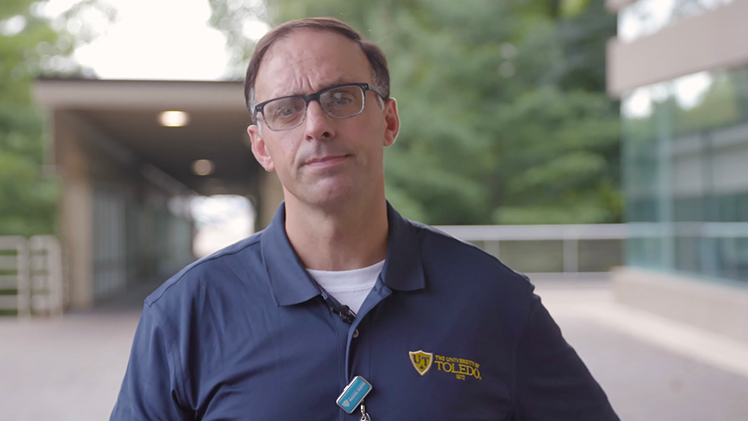The rapidly declining number of new COVID-19 infections in Ohio and across the country should give us a chance to get back closer to normal, but it’s difficult to say with any certainty what lies ahead.
Dr. Michael Ellis, an infectious disease specialist and the chief medical officer at The University of Toledo Medical Center, said we’re in a much better place than we were just a few weeks ago.

Dr. Michael Ellis, an infectious disease specialist and UTMC’s chief medical officer, said we can’t predict COVID-19’s behavior, but there are reasons for cautious optimism.
“We’re now clearly on the downslope for cases caused by the omicron variant,” Ellis said. “The current models and prevailing thought are that infections will continue to come down to pre-omicron levels.”
As of Feb. 13, Ohio’s seven-day moving average for new cases was 3,173, an 89% decrease from its peak of more than 28,000 in mid-January. Lucas County has seen a similar decline.
While Ellis doesn’t see the omicron subvariant, known as BA.2, reversing that trend in the short term, he said we can’t know for sure how COVID-19 will behave in the future.
“Omicron is a great example of that. Within one month it became not just the predominant strain, but essentially the only strain circulating in the United States,” he said. “Things change quickly and these variants can be transmitted around the globe quickly. We have to always maintain situational awareness and continual readiness.”
Even so, Ellis said there are reasons for cautious optimism.
Hospitalizations are falling, both locally and nationally. Deaths, which remain high, are expected to begin falling soon because, between vaccinations and previous infections, a significant portion of the U.S. population has some level of immunity to the virus.
Research also has come remarkably far in the past two years, Ellis said.
“We should take stock of the positive things that have happened over the last two years,” he said. “We’ve developed antiviral therapeutics, both intravenous and oral, we’ve developed monoclonal antibody treatments, we’ve developed in record speed effective vaccines and importantly, those vaccine platforms can be used to tackle new, important strains of the virus.”
While omicron rendered two highly relied upon monoclonal antibody treatments ineffective — leading the U.S. Food and Drug Administration to revise their emergency use authorizations — supplies of a third antibody treatment called sotrovimab that is effective against omicron have improved.
Ellis said UTMC now has an adequate stock of sotrovimab as well as other therapeutics that are effective against the omicron variant.
“With less virus circulating, less strain on our medical infrastructure and better supply of effective therapeutics, I’m hopeful we can move back to more of our normal lives and activities,” he said. “It’s so important for everyone, not just for their livelihoods, but for their wellbeing and their family’s wellbeing.”
He also said it’s important for people to recognize that even though the COVID-19 vaccines were not as protective against infection against omicron as they were the previous variants, they remained very effective protecting against hospitalization and death.
Since Jan. 1, 2021, fewer than 4,000 fully vaccinated individuals have been hospitalized in Ohio with COVID-19 and fewer than 1,000 fully vaccinated people have died from it, compared with more than 60,000 hospitalizations and almost 19,000 deaths in people who were not fully vaccinated.
Finally, Ellis has high praise for the entire workforce at UTMC.
“Our team has done an exceptional job weathering this most recent surge, showing flexibility, resilience and compassion,” he said. “The pandemic has been fatiguing for everyone — emotionally, psychologically and physically — but I really value the sense of duty and purpose that our team has shown throughout this pandemic.”